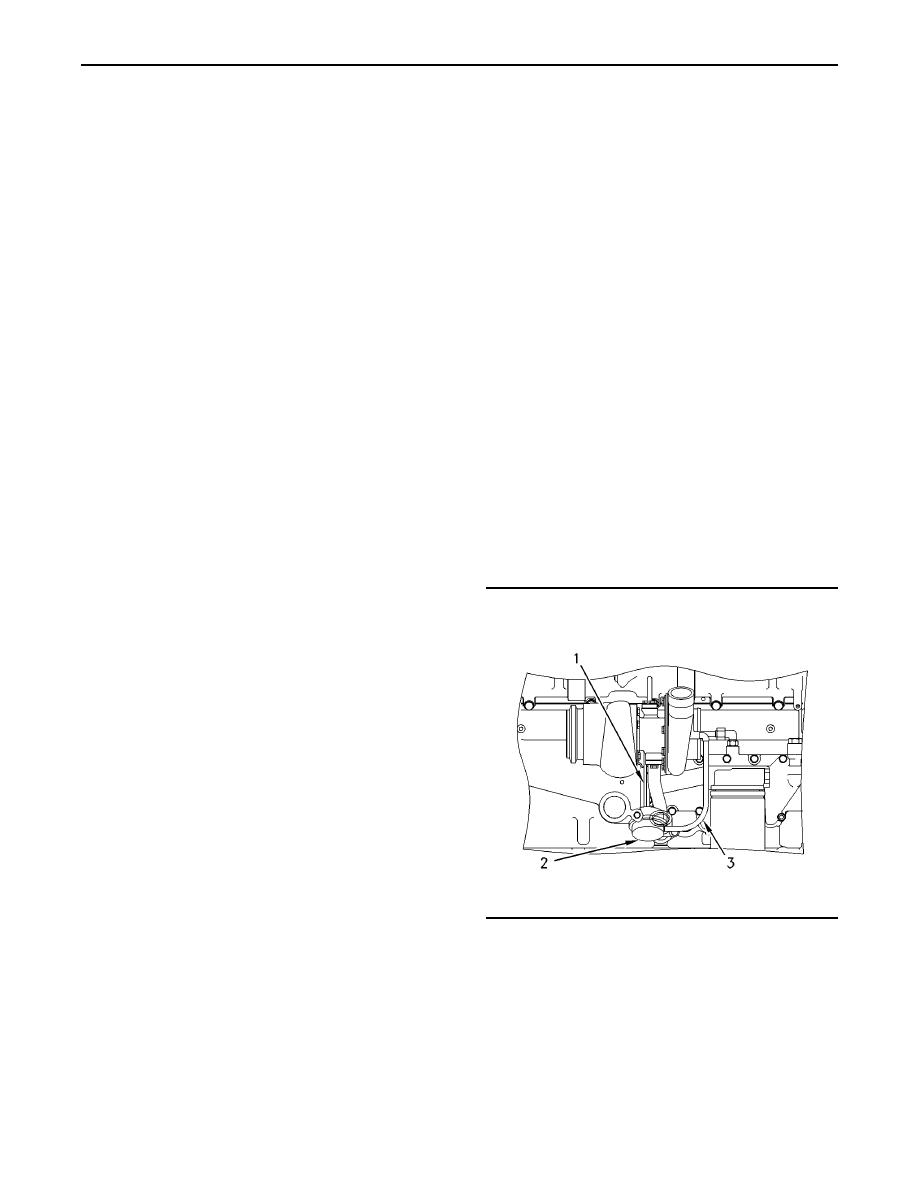 |
|||
|
|
|||
|
Page Title:
Inspection of the Turbine Wheel and the Turbine Housing |
|
||
| ||||||||||
|
|
 72
TM 9-2320-312-24-2
Testing and Adjusting Section
d. Remove the turbocharger oil drain line.
drain is restricted, pressure in the center
Inspect the drain opening. Inspect the oil
housing may be greater than the pressure of
drain line. Inspect the area between the
the turbine housing. Oil flow may be forced in
bearings of the rotating assembly shaft. Look
the wrong direction and the oil may not drain.
for oil sludge. Inspect the oil drain hole for
Check the crankcase pressure and correct
oil sludge. Inspect the oil drain line for oil
any problems.
sludge in the drain line. If necessary, clean
the rotating assembly shaft. If necessary,
c. If the oil drain line is damaged, replace the
clean the oil drain hole. If necessary, clean
oil drain line.
the oil drain line.
d. Check the routing of the oil drain line.
e. If Steps 4.a through 4.d did not reveal the
Eliminate any sharp restrictive bends. Make
source of the oil leakage, the turbocharger has
sure that the oil drain line is not too close to
internal damage. Replace the turbocharger.
the engine exhaust manifold.
Inspection of the Turbine Wheel
e. If Steps 4.a through 4.d did not reveal the
and the Turbine Housing
source of the oil leakage, the turbocharger has
internal damage. Replace the turbocharger.
Remove the air piping from the turbine outlet casing.
Inspection of the Wastegate
1. Inspect the turbine for damage by a foreign
object. If there is damage, determine the source
The turbocharger senses boost pressure which
of the foreign object. Replace the turbocharger.
actuates the wastegate valve. The wastegate valve
If there is no damage, go to Step 2.
controls the amount of exhaust gas that is allowed
to bypass the turbine side of the turbocharger.
2. Inspect the turbine wheel for buildup of carbon
Regulating the amount of exhaust gas that enters the
and other foreign material. Inspect the turbine
turbocharger regulates the rpm of the turbocharger.
housing for buildup of carbon and foreign
material. Clean the turbine wheel and clean the
turbine housing if you find buildup of carbon or
foreign material. If there is no buildup of carbon
or foreign material, go to Step 3.
3. Turn the rotating assembly by hand. While you
turn the assembly, push the assembly sideways.
The assembly should turn freely. The turbine
wheel should not rub the turbine wheel housing.
Replace the turbocharger if the turbine wheel
rubs the turbine wheel housing. If there is no
rubbing or scraping, go to Step 4.
4. Inspect the turbine and the turbine wheel
housing for oil leakage. Inspect the turbine and
the turbine wheel housing for oil coking. Some oil
coking may be cleaned. Heavy oil coking may
require replacement of the turbocharger. If the oil
is coming from the turbocharger center housing
go to Step 4.a. Otherwise go to "Inspection of
the Wastegate".
g00295815
Illustration 57
a. Remove the turbocharger oil drain line.
Typical Example
Inspect the drain opening. Inspect the area
(1) Actuating Rod
between the bearings of the rotating assembly
(2) Canister
shaft. Look for oil sludge. Inspect the oil drain
(3) Line
hole for oil sludge. Inspect the oil drain line
for oil sludge. If necessary, clean the rotating
When the engine operates in conditions of low boost
assembly shaft. If necessary, clean the drain
(lug), a spring presses against a diaphragm in
opening. If necessary, clean the drain line.
canister (2). This moves actuating rod (1) in order to
close the wastegate valve. Then, the turbocharger
can operate at maximum performance.
|
|
Privacy Statement - Press Release - Copyright Information. - Contact Us |